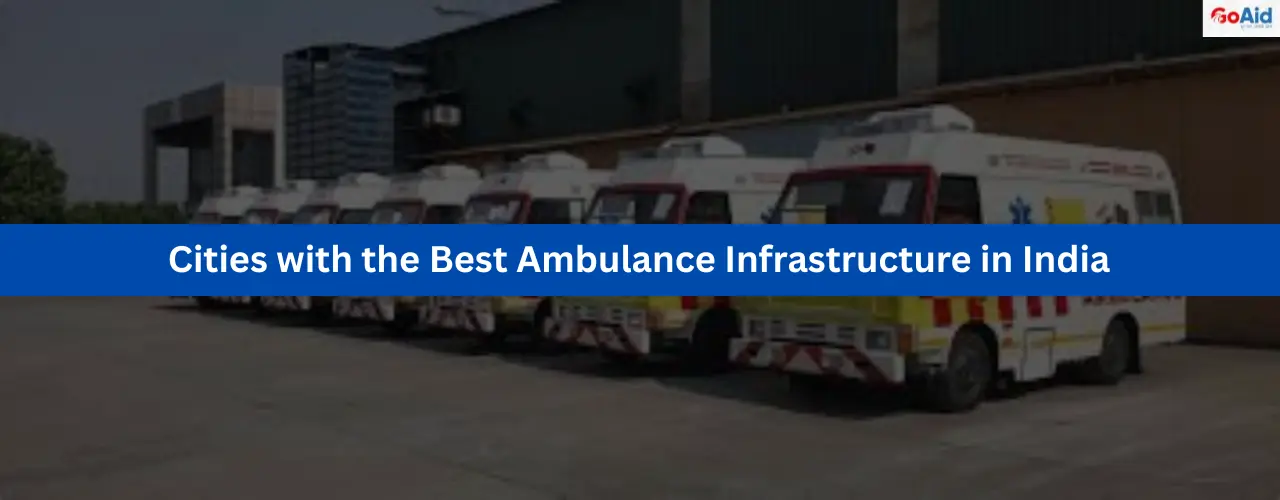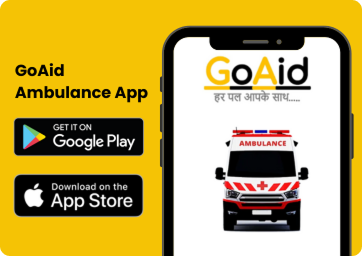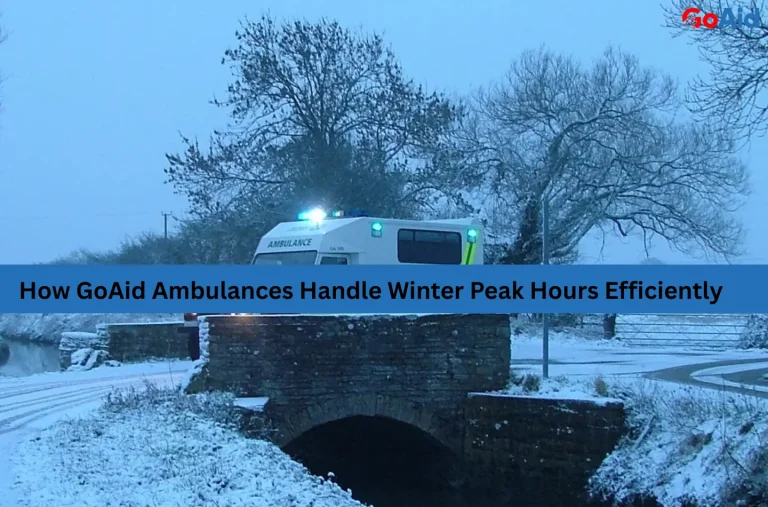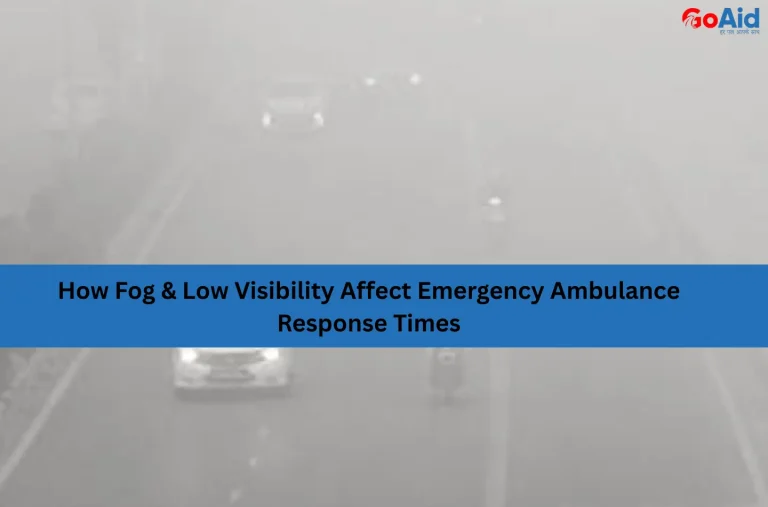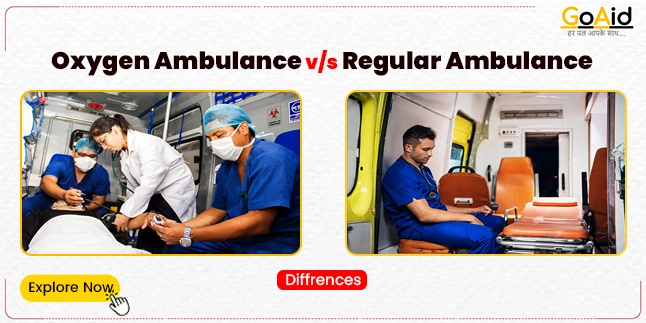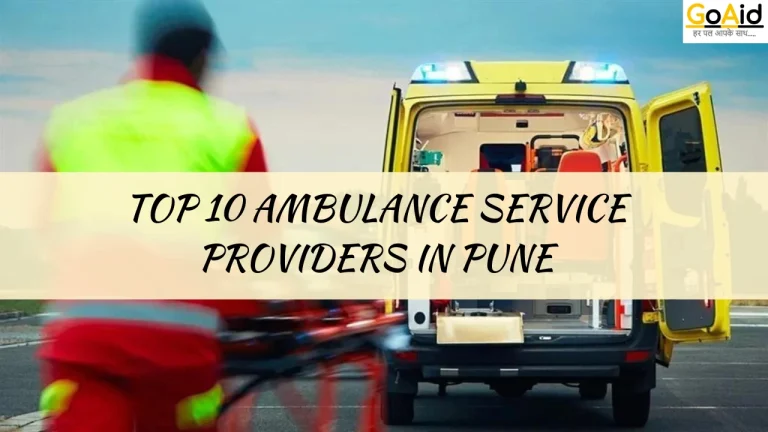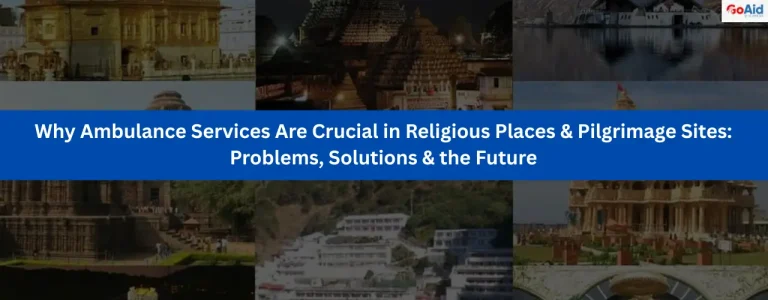If you are living in India, then you must be aware of this amazing fact that in each state of India, the ambulance infrastructure varies. But out of this, the funny part is, this medical emergency transportation infrastructure also varies in different cities of a state. However, in India, there are a few cities that have been named the best cities with the best medical emergency transportation infrastructure and services. Do you know about them?
Well, if you donŌĆÖt, then no need to worry about it! In this blog, we have explained each and every component of it. Also, we have mentioned the top cities with the best ambulance infrastructure in India. Are you excited to know all these details? Then read this blog to the end.
So, letŌĆÖs begin:
What is an Ambulance Infrastructure?
Ambulance infrastructure refers to the overall system that supports emergency medical transportation in a city or region. It includes the number and types of ambulances, trained paramedics, GPS tracking systems, response times, booking options, and dispatch centers.
A strong infrastructure ensures faster and safer transportation of patients during emergencies. This also involves maintenance of vehicles, availability of ICU or ventilator-equipped ambulances, and integration with nearby hospitals.┬Ā
In short, ambulance infrastructure forms the backbone of emergency healthcare, and its effectiveness directly impacts the survival and recovery chances of patients in need of urgent medical attention.
Key Components of Ambulance Infrastructure
A well-built ambulance infrastructure includes multiple elements that work together to ensure a timely and efficient emergency response. Here are the ten most essential components of ambulance infrastructure:
1. Fleet Diversity
A good infrastructure includes various ambulance typesŌĆöBLS, ALS, ICU, and mortuary vansŌĆöcatering to different emergency needs and patient conditions across the city.
2. Response Time Efficiency
Short response times are crucial. Cities with strong ambulance infrastructure ensure vehicles reach within 10ŌĆō15 minutes after booking, saving more lives during emergencies.
3. Advanced Dispatch System
Centralized dispatch centers equipped with software and trained staff allocate ambulances faster, optimizing time and reducing delays in emergency handling.
4. Trained Medical Staff
Professional paramedics and trained ambulance drivers play a critical role in patient care during transit, ensuring medical attention starts immediately after pick-up.
5. 24/7 Availability
Round-the-clock ambulance services ensure people get emergency care at any hour, reinforcing trust and readiness in the healthcare infrastructure.
6. Integration with Hospitals
Efficient ambulance networks are connected with major hospitals for smooth patient transfers and immediate treatment upon arrival at the emergency facility.
7. GPS Tracking
Real-time GPS in ambulances helps monitor routes and location, ensuring quicker dispatch, accurate ETAs, and better route management in urban areas.
8. Maintenance and Safety
Regular servicing of ambulances and safety checks prevent breakdowns during emergencies, ensuring the reliability and durability of the transport system.
9. Booking Accessibility
Multi-mode booking is available via phone, app, or website. This ensures users can request an ambulance quickly from anywhere, improving service reach.
10. Government Compliance
Ambulance services following government guidelines ensure fair pricing, proper equipment, and service standards that benefit the public uniformly.
Why Ambulance Infrastructure Matters in India?
Ambulance infrastructure plays a vital role in saving lives across India, where population density, traffic congestion, and healthcare disparities pose constant challenges. In emergencies, every second counts, and a strong ambulance system ensures a timely response, which can significantly reduce fatalities.┬Ā
With IndiaŌĆÖs growing urban population and rising accident rates, efficient ambulance services with trained staff, advanced equipment, and quick accessibility are more important than ever.
A robust infrastructure also supports rural and underserved areas by connecting patients to hospitals faster. It ensures equal access to emergency medical care for all, regardless of location. Moreover, during national crises like pandemics or natural disasters, dependable ambulance systems provide critical support for mass medical response.┬Ā
Investing in better ambulance infrastructure means building a safer, healthier India, where people can trust that help will arrive without delay. Hence, itŌĆÖs a key pillar of public health and emergency preparedness in the country.
Top Cities in India with the Best Ambulance Infrastructure
IndiaŌĆÖs major cities vary in emergency medical infrastructure. Here are the top 10 cities known for their robust ambulance systems, rapid response, and advanced medical transport services:
1. Delhi
Delhi has a vast ambulance fleet with advanced features like GPS tracking, quick 10-minute response, and trained paramedics. Services like GoAid and government initiatives ensure reliable coverage across the capital. Ambulances are equipped for trauma, ICU, and emergency care.
Ambulance Infrastructure Score: 92/100
2. Mumbai
MumbaiŌĆÖs ambulance system features 24/7 availability, real-time tracking, multilingual staff, and coordination with leading hospitals. Private services like GoAid and municipal services provide rapid responses, ventilator support, and ICU facilities, covering both slum and high-rise regions efficiently.
Ambulance Infrastructure Score: 91/100
3. Bengaluru
Bengaluru offers tech-powered ambulance dispatch, GPS-enabled units, and 24/7 BLS and ALS services. Tied with top hospitals, the city supports accident response, cardiac emergencies, and inter-hospital transfers with trained EMTs and paramedics, especially in tech parks and residential areas.
Ambulance Infrastructure Score: 89/100
4. Hyderabad
Hyderabad is equipped with mobile ICU vans, trained staff, and government-supported ambulance networks. It features smart call systems, city-wide reach, and fast service to medical hubs. The city excels in trauma and critical care transport.
Ambulance Infrastructure Score: 87/100
5. Chennai
Chennai combines government-run 108 services and private operators for round-the-clock ambulance access. With ventilator-equipped vans, skilled paramedics, and strategic stationing across the city, it ensures timely help during emergencies, especially during natural calamities and urban medical crises.
Ambulance Infrastructure Score: 86/100
6. Ahmedabad
Ahmedabad has emerged as a growing emergency response hub. Ambulances here are tech-integrated, affordable, and quick to respond. The city’s initiatives for women, children, and the elderly emergencies have strengthened its service quality and expanded reach to all socio-economic sections.
Ambulance Infrastructure Score: 85/100
7. Pune
Pune offers GPS-enabled ambulances, trained emergency staff, and a strong app-based booking system. Its ambulance providers ensure fast access to trauma care, with availability across urban and semi-urban zones, making it efficient for accident-prone areas and crowded districts.
Ambulance Infrastructure Score: 84/100
8. Jaipur
Jaipur has grown rapidly in ambulance efficiency through GoAid’s 10-minute response system and 24/7 service. It covers critical care, ICU transfers, and government-approved emergency services across the city and adjoining rural areas, improving patient outcomes significantly.
Ambulance Infrastructure Score: 83/100
9. Kolkata
KolkataŌĆÖs ambulance services are powered by a mix of public and private providers, offering oxygen support, ICU vans, and round-the-clock availability. With better city-hospital connectivity, it handles high patient volumes and emergency cases effectively, especially in densely populated districts.
Ambulance Infrastructure Score: 82/100
10. Lucknow
Lucknow has upgraded its ambulance ecosystem with mobile app booking, improved emergency response times, and trained medical personnel. Services now include cardiac support, ventilator ambulances, and inter-district transfers, making emergency care faster and more accessible for citizens.
Ambulance Infrastructure Score: 80/100
Key Factors Affecting the Ambulance Infrastructure in India
Ambulance infrastructure in India depends on several critical factors. These directly impact response time, service quality, and accessibility. Here are the ten key factors that determine the efficiency of emergency ambulance services:
1. Urban Planning & Traffic Conditions
Heavy traffic and poor urban design delay ambulances. Lack of dedicated emergency lanes increases response time, especially in metro cities with narrow or congested roads.
2. Number of Operational Ambulances
A low ambulance-to-population ratio weakens emergency response. Cities need more vehicles per capita to ensure quick service, especially during peak hours or public emergencies.
3. Quality of Medical Equipment
Ambulances with outdated or non-functional medical tools canŌĆÖt handle critical emergencies. Well-equipped vehicles with ventilators, oxygen, and monitors improve patient care during transport.
4. Skilled Emergency Staff
Lack of trained paramedics or emergency technicians limits care during transit. Skilled staff can stabilize patients, provide CPR, and handle trauma before hospital arrival.
5. Dispatch and Communication Systems
Efficient call centers and real-time GPS tracking systems ensure quick deployment. Weak coordination or delays in dispatch reduce ambulance efficiency significantly.
6. Public Awareness & Accessibility
Many people donŌĆÖt know how to contact emergency ambulance services. Without awareness or simple booking platforms, accessibility remains poor in many regions.
7. Collaboration with Hospitals
Better coordination between ambulances and hospitals ensures quicker admissions and informed preparations. Poor hospital links cause delays in treatment upon arrival.
8. Government Support & Policies
State and central policies that support funding, regulation, and private partnerships boost infrastructure. Lack of support hinders innovation and service expansion.
9. Geographic Challenges
Remote areas with poor road conditions and a lack of ambulance stations face longer response times. Accessibility issues hurt the rural healthcare infrastructure badly.
10. Technological Integration
Use of apps, AI-routing, and electronic patient records enhances service. Areas without digital integration rely on outdated systems, reducing speed and efficiency.
Know More: Difference between BLS Ambulance and ALS Ambulance
Benefits of Living in a City with the Best Ambulance Infrastructure
A city with excellent ambulance infrastructure offers not only quicker emergency response but also saves lives and improves public health. Here are seven key benefits residents enjoy:
1. Faster Emergency Response
Quicker ambulance arrival ensures timely medical aid during critical situations like cardiac arrests, accidents, and trauma, significantly improving the chances of survival.
2. Reduced Mortality Rate
Well-equipped ambulances and trained staff help stabilize patients on-site, reducing deaths due to delayed treatment or lack of immediate care.
3. Advanced Pre-Hospital Care
Cities with top infrastructure offer ICU and ALS ambulances, providing high-level care even before reaching hospitals, ensuring better recovery outcomes.
4. Peace of Mind for Residents
Knowing help is always nearby provides mental relief to citizens, especially senior citizens, pregnant women, and patients with chronic illnesses.
5. Better Health Outcomes
Immediate intervention during medical emergencies minimizes complications, reduces hospital stay duration, and leads to faster healing and recovery.
6. Boost in Medical Tourism
Good ambulance infrastructure attracts medical tourists, as it assures safety and immediate transport in emergencies, enhancing the city’s healthcare reputation.
7. Support During Mass Casualties
In disasters or mass accidents, a strong ambulance network can handle multiple emergencies efficiently, preventing system overload and ensuring timely help.
Book Ambulance: GoAid Ambulance Service
Conclusion to the Cities with the Best Ambulance Infrastructure in India
In conclusion, weŌĆÖve explored the meaning and importance of ambulance infrastructure and revealed the top cities in India offering the best emergency transport services. Cities like Delhi, Mumbai, and Bengaluru lead with advanced ambulances, trained paramedics, and faster response times.
These cities provide not just better emergency care but also peace of mind to residents. Whether you’re relocating or simply seeking healthcare security, choosing a city with strong ambulance infrastructure can be life-saving. If you have any other questions, feel free to ask them in the comment box below.
FAQs related to the Cities with the Best Ambulance Infrastructure in India
Question-1: What is ambulance infrastructure?
Answer: Ambulance infrastructure includes vehicles, medical equipment, trained staff, communication systems, and operational protocols that ensure timely and efficient emergency medical response.
Question-2: Which city has the best ambulance service in India?
Answer: Delhi is considered to have one of the best ambulance services in India due to its high response rate, modern fleet, and trained medical staff.
Question-3: Why is ambulance infrastructure important in India?
Answer: It helps provide quick emergency response, reduces mortality, improves healthcare access, and ensures timely pre-hospital care in both urban and rural areas.
Question-4: How does ambulance infrastructure affect patient survival?
Answer: Quick and advanced ambulance support stabilizes patients before hospital admission, increasing survival rates during critical emergencies like heart attacks or accidents.
Question-5: What components make up good ambulance infrastructure?
Answer: Key components include advanced ambulances, GPS tracking, trained paramedics, 24/7 dispatch systems, communication tech, and affordable access.
Question-6: Is GoAid available in all top cities in India?
Answer: Yes, GoAid Ambulance Service operates in major Indian cities, providing fast, reliable, and affordable ambulance support across various emergency needs.
Question-7: Which Indian cities have rapid ambulance response times?
Answer: Delhi, Mumbai, Bengaluru, and Jaipur offer faster ambulance response due to better traffic systems, GPS tech, and multiple ambulance stations.
Question-8: What is the role of the government in ambulance infrastructure?
Answer: The government sets safety regulations, funds ambulance services, ensures accessibility in remote areas, and collaborates with private providers for nationwide coverage.
Question-9: How does ambulance infrastructure support healthcare tourism?
Answer: Cities with great ambulance services assure medical tourists of prompt emergency care, making them a preferred destination for international patients.
Question-10: How can I book an ambulance in cities with top infrastructure?
Answer: You can easily book an ambulance through mobile apps like GoAid, helpline numbers, hospital networks, or local emergency dispatch centers.

